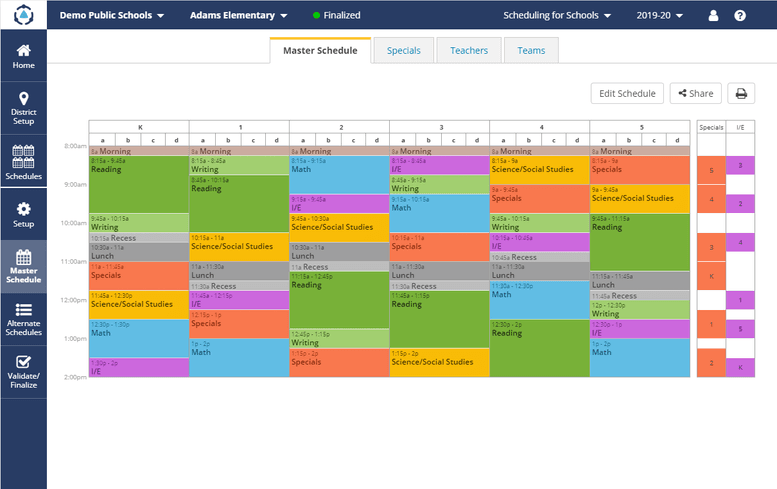This 12-part How to Build an Elementary School Schedule series shares expert step-by-step guidance and proven scheduling strategies to help you create better schedules this year.
Meeting the needs of every student can be very challenging when students have a wide range of needs across the school as well as within the same grades and classrooms. Implementing a dedicated, daily intervention and enrichment (I/E) period can ensure each student gets what they need, whether that is extra time in areas they need more help or enrichment opportunities.
Here, we explore the fundamental concepts behind a strong intervention/enrichment block.
- Why schedule an intervention and enrichment (I/E) period?
- How much time should be dedicated for an I/E period?
- Who provides instruction during I/E periods?
- How should students be grouped for I/E periods?
A daily grade-level intervention block prevents students from being routinely pulled out of core instruction and missing critical time with their homeroom teachers and peers in order to receive extra support. For students who are struggling in reading and math, a daily intervention block provides an opportunity to close the gap by receiving extra time for practice, reinforcement, and re-teaching of material in addition to core classroom instruction.
Daily enrichment occurs during the same period as daily intervention. Students participate in enrichment activities such as an independent study contract, cross-curricular activities, or project-based learning.
DMGroup recommends at least 30 minutes daily for an intervention and enrichment period. Some schools implement 45-minute blocks while others have separate 30-minute blocks for reading and math. Obviously, this time must come from somewhere, so it is important to balance curriculum needs with this extra time.
All classroom and intervention teachers with appropriate content expertise may provide instruction during the I/E block (e.g. Special Education Teachers, ELL Teachers, CEIS). This time may also be used for related services to avoid pulling out students from core instruction.
A grade-level intervention block allows student instructional groupings to be flexible across classrooms, time-limited, and targeted based on individual student needs that are informed by common assessment data.
Intervention grouping requires collaborative planning time for grade-level teachers and special education teachers to form and review groupings as well as to regularly monitor student progress.
Implementing a daily intervention and enrichment period is a powerful tool to help your school better meet the needs of all students with wide-ranging needs. Consider adding a dedicated I/E block to your elementary school schedule for the upcoming school year.

About DMSchedules
Create Better School and Staff Schedules Now with DMGroup’s DMSchedules Scheduling Software
Learn moreElementary Scheduling Software

